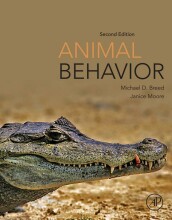Summary: Evolution And Systematics
- This + 400k other summaries
- A unique study and practice tool
- Never study anything twice again
- Get the grades you hope for
- 100% sure, 100% understanding
Read the summary and the most important questions on Evolution and systematics
-
5. Molecular basis of variation and adaption
This is a preview. There are 3 more flashcards available for chapter 01/03/2021
Show more cards here -
The genetic code, which specifies the three-letter codons that specify particular amino acids, is said to be redundant because ...amino acid sequences are produced by different allelesit is observed in virtually all know organismsone codon can code for more than one amino acidphenotypic variation is observed depending on the codon usagesome amino acids are coded for by more than one codon
some amino acids are coded for by more than one codon -
Genes that are derived from a common ancestral sequence, and are separated by a speciation event such as the RNASE1 gene in douc langur monkeys and the RNASE1 gene in humans, are described as ...duplicated genesorthologous geneshomologous genesparalogous genesderived genes
Orthologous genes -
Chromosome inversions often result from a multistep process that begins when radiation causes ...a duplication event, followed by reannealing of chromosomesfour double-stranded breaks in a chromosometwo double-stranded breaks in a chromosometwo single-stranded breaks in a chromosome
Two double-stranded breaks in a chromosome -
According to the studies of Eyre-Walker and Keightley (2007), there appear to be four types of mutations observed in most organisms. Which of the following is NOT a type of mutation that is observed?deleteriouslethalneutraladditivebeneficial
Additive -
What is a key difference between prokaryote genomes and the genomes of multicellular eukaryotes?Multicellular eukaryote genomes have a greater number of protein-coding genes than prokaryote genomes.Prokaryote genomes have more introns than multicellular eukaryote genomes.Multicellular eukaryote genomes have larger intergenic regions than prokaryote genomes.There are more mobile genetic elements in prokaryote genomes than in multicellular eukaryote genomes.
Multicellular eukaryote genomes have larger intergenic regions than prokaryote genomes. -
Which statement accurately describes a relationship between mutation rate and genome size?Larger genomes have higher mutation rates across all domains of life.Larger genomes have lower mutation rates across all domains of life.Mutation rate increases with genome size in multicellular organisms.Mutation rate increases with genome size in unicellular organisms.
Mutation rate increases with genome size in multicellular organisms. -
Immediately following a gene duplication event, what is the most likely evolutionary outcome for a duplicated gene?Duplicated genes usually evolve to perform new functions that differ from their original function (called neofunctionalization), or both duplicate copies evolve via subfunctionalization.Most gene duplication events are selectively neutral and therefore the duplicated gene usually spreads through the population. It can later evolve a new function or keep its original function.Most gene duplication events are deleterious to an organism and therefore are lost due to natural selection.Most gene duplication events are selectively neutral and are therefore lost due to drift.
Most gene duplication events are selectively neutral and are therefore lost due to drift. -
16. Mechanisms of speciation
This is a preview. There are 6 more flashcards available for chapter 02/03/2021
Show more cards here -
The species concept based on careful analysis of the anatomical details of the specimen in question is...the morphospecies conceptthe phylogenetic species conceptthe biological species conceptthe ecological species concept
themorphospecies concept -
The species concept based on analysis of character states that indicate the smallest monophyletic group is...the morphospecies conceptthe phylogenetic species conceptthe biological species conceptthe ecological species concept
thephylogenetic species concept -
A disadvantage of the morphospecies concept is...it can be difficult to apply to organisms with small, difficult to distinguish featuresspecies definitions may become arbitrary if the concept is not applied carefullyspecies definitions applied by different researchers may not be comparable
it can be difficult to apply to organisms with small, difficult to distinguish features
speciesdefinitions may becomearbitrary if the concept is not applied carefully
speciesdefinitions applied by different researchers may not becomparable
- Higher grades + faster learning
- Never study anything twice
- 100% sure, 100% understanding































